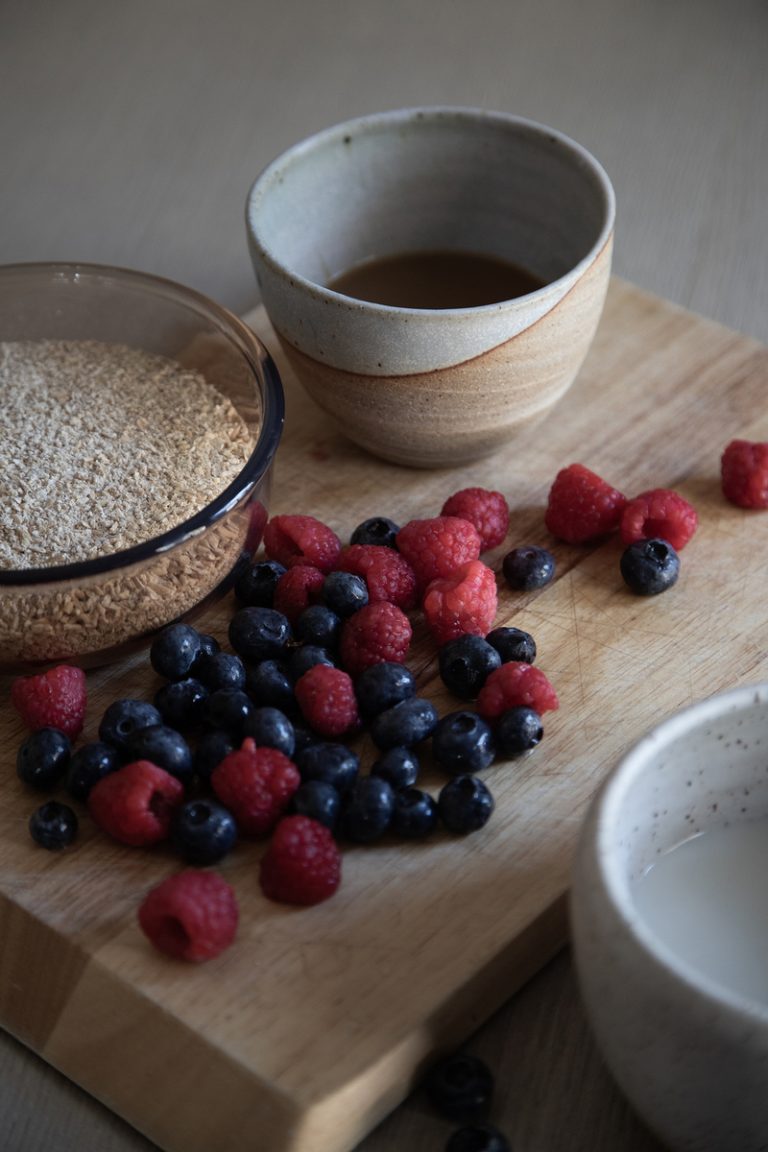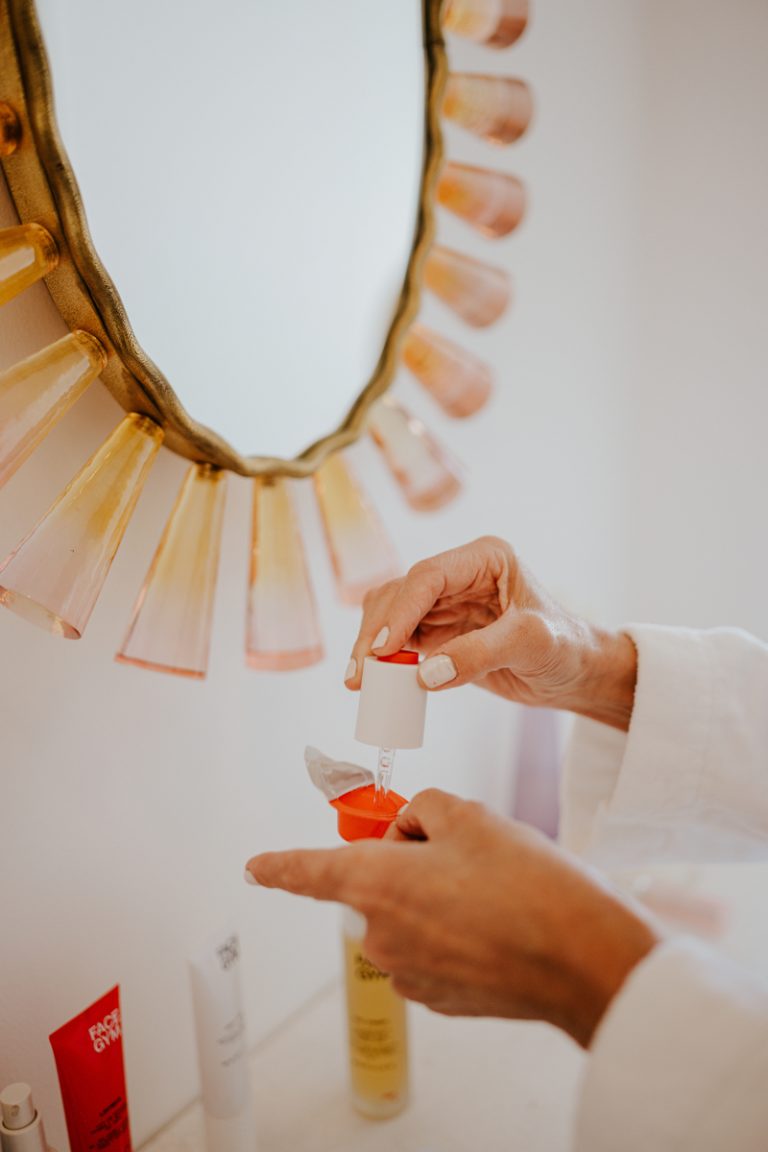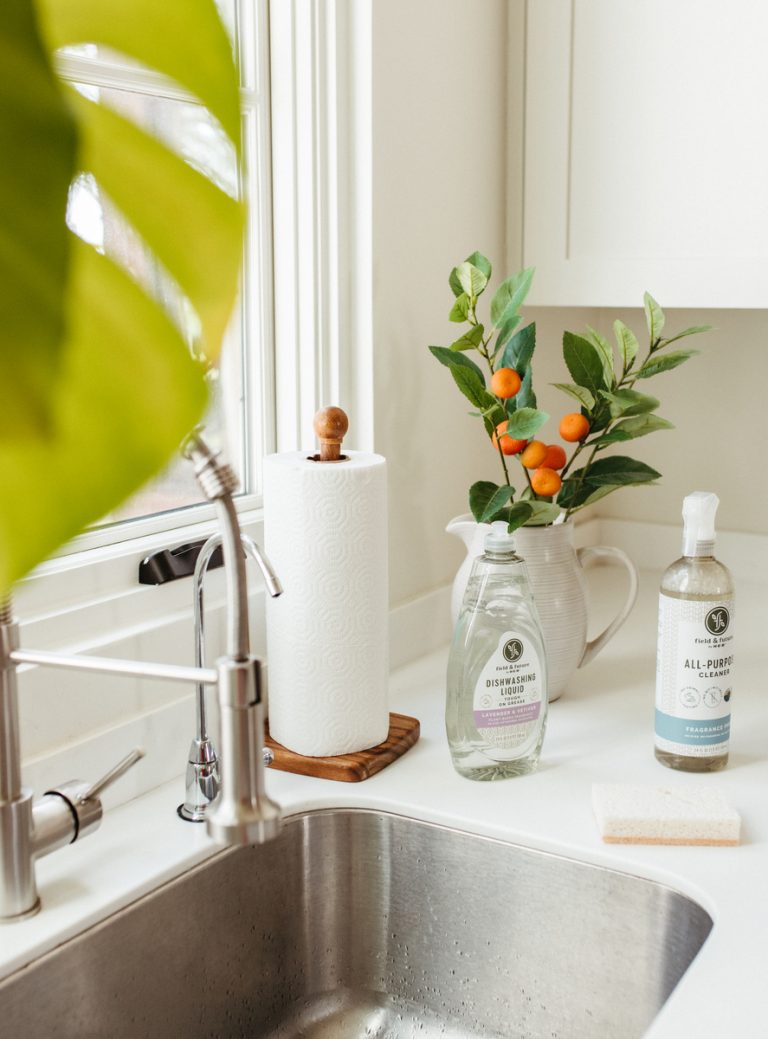You’ve committed to resolving your menstrual symptoms (goodbye, PMS!), but you don’t know where to begin. Or, you’ve recently been diagnosed with a hormonal imbalance, like PCOS. Or maybe, you’re keen on switching from birth control to natural family planning. At any rate, you’re ready to learn how to balance hormones. Welcome! You’ve come to the right place.
Unfortunately, as women, we’ve been taught that suffering through crippling cramps, mood swings, skin woes, and intense cravings is normal. But I want to let you in on a secret: None of these scenarios are a normal part of womanhood. They are sneaky signs you probably have a hormonal imbalance. The good news is, it’s your birthright to experience drama-free periods, vibrant energy, and stable moods. And even better news: it’s possible to achieve this.
Today, we’re walking you through what causes hormonal imbalances and how to take a natural approach to balancing your hormones.
Featured image of Janessa Leoné by Teal Thomsen.

Subscribe
Sleep well.
Sign up to receive a FREE E-BOOK with 12 steps to your best sleep ever.
Thanks for Signing Up!
Oops!
Looks like you’re already signed up or your email address is invalid.
Oops!
Looks like you unsubscribed before click here to resubscribe.
The Fifth Vital Sign
Each month—during the years between puberty and menopause—a woman’s body goes through a number of changes. This series of hormone-driven events is called the menstrual cycle. Some experts refer to it as the fifth vital sign. The length of your cycle is calculated from the first day of your period to the day before your next period starts. On average, a very healthy cycle looks like 25-32 days, with bleeding lasting approximately five days. That said, every woman’s body is different!
As a menstruating woman, it’s important to understand the four stages of your menstrual cycle. After all, each stage (or phase) is completely different. Supporting each phase uniquely is the key to a more seamless period. Once you get to know your flow, it will become an integral part of your lifestyle. You’ll learn how to adapt your schedule (personal and professional), diet, and exercise habits to nourish your hard-working body.
The Four Phases of the Menstrual Cycle
What happens during each menstrual cycle? High-level, an egg develops and is released from the ovaries. If a pregnancy doesn’t happen, the uterine lining sheds during a menstrual period. You bleed, and the cycle starts again. The four phases of the menstrual cycle are the menstrual phase, follicular phase, ovulation phase, and luteal phase. The length of each phase can differ from woman to woman, and it can change over time.
Menstrual Phase
The menstrual phase is the first stage of the menstrual cycle. This phase starts when an egg from the previous cycle isn’t fertilized. There’s a drop in estrogen and progesterone. The thickened lining of your uterus, which would support a pregnancy, is no longer needed. And so, it sheds. During this time, it’s helpful to focus on foods that are rich in iron and are anti-inflammatory, like high-quality animal protein, avocado, leafy greens, ginger, and dark chocolate.
Follicular Phase
The follicular phase starts on the first day of your period (there is some overlap with the menstrual phase) and ends when you ovulate. It starts when the hypothalamus sends a signal to release follicle-stimulating hormone (FSH).
This hormone stimulates your ovaries to produce around 5-20 small sacs, called follicles. Each follicle contains an immature egg. Only the healthiest egg will eventually mature (on rare occasions, a woman may have two eggs mature). The rest of the follicles will be reabsorbed into your body. This phase lasts about 16 days. Foods to focus on during the follicular phase include green vegetables, nuts, seeds, eggs, fatty fish, and legumes.
Ovulation Phase
Rising estrogen levels during the follicular phase trigger your pituitary gland to release luteinizing hormone (LH). This is what starts the process of ovulation. Ovulation occurs when your ovary releases a mature egg. The egg travels down the fallopian tube toward the uterus to be fertilized by sperm. You can tell that you’re ovulating by symptoms including: a slight rise in basal body temperature and thicker discharge, with the texture of egg whites.
Ovulation happens at around day 14 (if you have a 28-day cycle)—right in the middle of your menstrual cycle. It lasts about 24 hours. After a day, the egg will die or dissolve if it isn’t fertilized. Foods to focus on during ovulation include asparagus, Brussels sprouts, chard, dandelion greens, cilantro, and spinach. Additionally, antioxidant-rich fruits, such as raspberries, strawberries, and coconut help support further detoxification of rising hormones in the liver.
Luteal Phase
After the follicle releases its egg, it changes into the corpus luteum. This structure releases hormones. The rise in hormones keeps your uterine lining thick and ready for a fertilized egg to implant. If you do get pregnant, your body will produce human chorionic gonadotropin (hCG). It helps maintain the corpus luteum and keeps the uterine lining thick.
If you don’t get pregnant, the corpus luteum will shrink away and be resorbed. This leads to decreased levels of estrogen and progesterone, which causes the onset of your period. The uterine lining will shed. The luteal phase lasts for 11-17 days. Foods to focus on during the luteal phase include lean protein, cauliflower, cucumber, squash, sesame seeds, spinach, and brown rice.
What causes irregular menstrual cycles?
Every woman’s menstrual cycle is different. Some women get their period at the same time each month. Others are more irregular. Some women bleed more heavily or for a longer number of days than others. Your menstrual cycle can also change during certain times of your life. That said, it’s really helpful to track your periods. Eventually, the goal is to sync your cycle with your life. Spoiler alert—that’s a key part of learning how to balance your hormones. Any of the following can alter your menstrual cycle, causing hormonal imbalance:
- Birth control. The birth control pill may make your periods shorter and lighter (or disappear entirely).
- Pregnancy. Missed periods are one of the most obvious first signs that you’re pregnant.
- Polycystic ovary syndrome (PCOS). This hormonal imbalance prevents an egg from developing normally in the ovaries. PCOS causes irregular menstrual cycles and missed periods.
- Fibroids. These noncancerous growths in your uterus can make your periods longer and heavier than usual.
- Inflammatory diet. Oftentimes, the root cause of hormonal imbalance is inflammation. Chronic inflammation can damage the cells in your endocrine glands. What’s surprising is that the inflammation (that causes hormonal imbalances) often starts in the gut.
- Endocrine disruptors. When absorbed in the body, an endocrine disruptor can decrease or increase normal hormone levels, mimic the body’s natural hormones, or alter the natural production of hormones.
- Eating Disorders. Anorexia, bulimia, and other eating disorders can disrupt your menstrual cycle and make your periods stop.
This is not an exhaustive list of reasons why a menstrual cycle can be irregular. If you sense your period is irregular (short, long, non-existent, or you spot between cycles, please reach out to your healthcare provider, or let’s work together!).
How long does it take to balance hormones?
As you can imagine, this varies. However, research shows that by taking a holistic, well-rounded approach, you can balance your hormones in less than four months. In fact, you can significantly reduce the amount of chemicals and pesticides in your body in one week. How? By switching to an organic diet. And in less than 10 days, you can improve your blood sugar by eating less sugar (a main culprit in estrogen dominance).
By incorporating more fermented foods and a potent probiotic, women can more easily detox estrogen—which helps balance hormones—in less than two months. By four months, eating a hormonally-supportive diet makes an impact, slowing the aging process and protecting fertility.
How to Balance Hormones: Natural Tips
Ultimately, consistency and commitment are key. The lifestyle changes to balance your hormones is all-encompassing. Here are the Cliffs Notes: Focus on an anti-inflammatory, nutrient-dense diet, remove endocrine disruptors, incorporate stress relief habits, and take the necessary steps to get your gut health on track. Finding a balance with exercise is important, too. If you’re feeling overwhelmed, start small. Begin with daily meditation practice. Next week, take a stab at a 3-day hormone-balancing meal plan. One step at a time.
Eat Enough
You read that right. Not consuming enough calories (particularly if you are very active) can wreak havoc on your hormones. As women, we need substantial carbs, protein, and healthy fats to fuel our busy lifestyles and our hormones. For that matter, I don’t recommend going keto. Particularly if your menstrual cycle is absent, consider if you’re eating too low-carb. Research shows that maintaining adequate carbs in your diet will take some pressure off your adrenal glands, encourage sex hormone production, and promote restoration of your period.
Support Gut Health
When gut health isn’t optimal, hormones become imbalanced. For example, there is new research showing that the microbiome plays a significant role in estrogen regulation. These studies indicate that poor gut health increases the risk of estrogen-related diseases such as PCOS, endometriosis, and even breast cancer.
Incorporating a variety of fermented foods (sauerkraut, kimchi, tempeh, etc.) as well as taking a probiotic can help balance hormones. Furthermore, make sure you’re getting in your fiber. Fiber is essential for good gut health and is associated with improvements in insulin sensitivity and the hormones that control hunger and fullness.
Don’t Forget Vitamins B and D
Taking a high-quality vitamin B-complex supplement can help when you’re in the throes of hormonal ups and downs. This is one group of vitamins that you might want to supplement with in addition to eating foods high in these vitamins. Vitamin B-complex is involved in both the production of testosterone and the regulation of energy production in the body. There are nine B vitamins in total, and certain foods contain specific B vitamins.
For example, wild-caught salmon is an excellent source of many B vitamins. Leafy greens, like spinach, kale, collard greens, and even romaine lettuce contain B9—also known as folate. Other foods with notable amounts of B vitamins are eggs, sunflower seeds, milk, yogurt, and animal protein. Vitamin D is essential, too. In fact, numerous studies show its importance for mitigating symptoms of PCOS.
Engage in Regular Exercise
Caveat—make sure it’s movement you enjoy! As you begin to tap into how to balance your hormones, naturally, consider your current exercise routine. Do you need some inspiration? Or are you possibly exercising too much? A happy medium is where it’s at. The more you learn about your cycle, the more you’ll switch up your exercise routine to sync with your cycle.
Incorporate Stress Reduction Techniques
No surprise here. Stress causes your body to go into fight or flight mode—it’s just the way we’re wired. And when we’re stressed, cortisol rises. In turn, elevated cortisol affects your hormones, including ovulation. Chronic stress can lead to late (or completely stopped) periods. From stress-relieving yoga poses to stress-reducing teas, there are a variety of ways to bring more om into your life. Making time to de-stress does wonders for your mind, body, and hormones.
Switch to Clean Beauty
Here at CS, we love all-things clean beauty. From moisturizers to mascaras, we’ve tried ’em all. When it comes to skincare and makeup products, clean is keen. On a daily basis, we are exposed to so many chemicals, and as women, we are particularly targeted. Chemicals are found in our beauty and personal care products—which we use, every day. In fact, women use an average of 12 personal care products, daily, that contain 168 different chemicals.
Although an individual beauty product may have small amounts of harmful chemicals, our overall exposure (and the combination of different chemicals) is what causes problems. More research is showing that the chemicals in these products can affect our hormones, fertility, and the health of our babies. Thankfully, clean beauty brands are a dime a dozen.
Ditch the Plastic
For your body and the environment. Studies show that plastics contain (and leach) hazardous chemicals, including endocrine-disrupting chemicals (EDCs). EDCs disturb the body’s hormone systems and can cause cancer, diabetes, reproductive disorders, and neurological impairments of developing fetuses and children. The report describes a wealth of evidence supporting direct cause-and-effect links between the toxic chemical additives in plastics and specific health impacts to the endocrine system. Swap your plastic Tupperware for glass!
Choose Non-Toxic Cleaning Products
Like your skincare, choosing non-toxic cleaning products is essential for a happy home, body, and mind. When it comes time to detox your home, take inventory of your cleaning products. Where do they fall in the EWG’s rank? In essence, using primarily non-toxic cleaning products can reduce the burden on your liver, allowing it to process your hormones more effectively. Supporting the liver is an important step in balancing hormones and improving health.
Speaking of detoxing your home, take your shoes off! Leave them at the door. There are heavy metals and other elements you pick up on your shoes that you do not want in your house.
Limit Inflammatory Foods
While eating enough is important, so is the quality of the food you’re consuming. Removing (or limiting) high-sugar, inflammatory foods is very beneficial for balancing hormones. In terms of which foods to ditch, see here. In essence, these are foods like high-fructose corn syrup, artificial sugars, industrial seed oils, and soda. The focus here is to “crowd out” unhealthy foods to make more room on your plate for nutrient-dense, hormone-balancing foods.
And if you’re wondering about coffee, the research is still limited. Consuming more than two cups of coffee may impact estrogen levels, but the jury’s still out. When it comes to consuming caffeine, it’s best to drink it on a full stomach (have your breakfast, first!) and be mindful of what you’re putting in your mug.
Get Consistent, Quality Sleep
No matter how nutritious your diet—or how consistent your exercise routine—getting enough restorative sleep is crucial for optimal health. You can’t balance your hormones, naturally, without good sleep! Poor sleep is linked to imbalances in many hormones, including insulin and cortisol. For instance, not only does sleep deprivation impair insulin sensitivity, but poor sleep is associated with a 24-hour increase in cortisol levels, which can lead to a decrease in estrogen. To maintain optimal hormonal balance, aim for at least 7 hours of high-quality sleep per night.
This post was originally published on February 26, 2022, and has since been updated.











